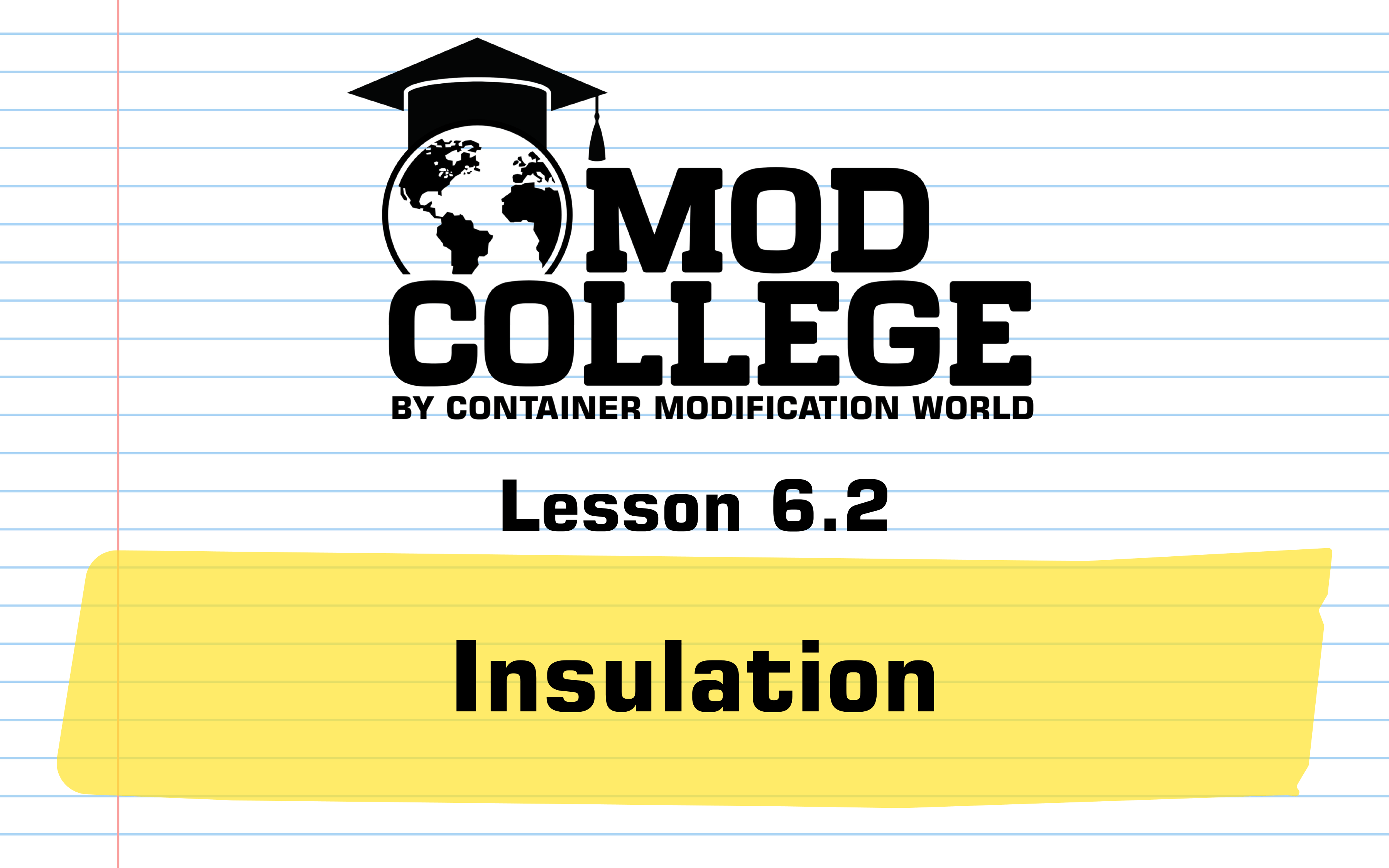
When converting a steel shipping container into a livable or usable structure, insulation is one of the most important steps.
A poorly insulated container will sweat, overheat, freeze, or trap moisture. Done right, insulation keeps your container dry, energy efficient, and comfortable year-round.
In this lesson, we’ll share our top insulation methods, which materials work best, and a few lessons learned from our 13+ years in the field.
Why Insulation Matters in Containers
Steel is a thermal conductor, meaning it transfers heat and cold quickly. Without insulation, a container will:
- Feel like an oven in the summer
- Feel like a freezer in the winter
- Condensate on the inside walls, leading to mold, mildew, and rust
- Lose energy rapidly (even with HVAC)
Whether you're building a tiny home, office, or jobsite washroom, insulation isn't optional; it’s essential.
Our Top Insulation Recommendation: Closed-Cell Spray Foam
At Container Modification World, we always recommend closed-cell spray foam insulation for container interiors.
Why it works best:
- High R-value per inch (R-6 to R-7)
- Air, vapor, and moisture barrier in one
- Fills all the corrugations of the container wall
- Adheres directly to steel, no need for vapor barriers
- Prevents condensation and thermal bridging
Pro Tip: Use CMW’s Steel Stud Framing Brackets to create a stand-off framing system that allows for full-depth spray foam application and avoids thermal bridging.
Other Insulation Options (When Foam Isn’t Feasible)
While spray foam is ideal, there are other options for different budgets and use cases:
Rigid Foam Board (XPS or Polyiso)
- R-5 to R-6.5 per inch
- Good for DIY installs
- Must be sealed tightly with tape and caulk
- Still requires a vapor barrier in many climates
- Works well on flat floors or ceilings
Fiberglass or Rockwool Batts
- Cheaper and easier to install
- Requires perfect framing and a vapor barrier
- Not ideal in humid or cold climates
- Prone to sagging or mold if moisture gets in
These materials only perform well in controlled indoor environments; avoid them for exterior wall insulation in four-season builds.
Check out The Container Guy's video on mineral wool and batten-style insulation:
Installation Tips & Tricks
Tip 1: Use a Thermal Break
Never let steel studs or fasteners create a direct line from outside to inside; that’s called thermal bridging, and it defeats your insulation.
Use CMW’s Container Strut Mount brackets to float your framing off the wall and break the path of heat transfer.
Tip 2: Don’t Skip Ventilation
Even the best insulation will trap moisture without airflow. Make sure your container includes:
- Intake and exhaust vents
- Dehumidifiers or HRV systems
- Soffit or roofline ventilation
Big Air Vents from CMW are designed specifically for containers and are a must-have for insulated spaces.
Tip 3: Seal Every Opening
Tiny air leaks can allow condensation or thermal loss to occur. Seal:
- Around windows and doors
- Roof vents
- Electrical and plumbing penetrations
- Corners and joints in your insulation material
Tip 4: Think Floor and Ceiling
Insulating walls is obvious, but many skip the floor and ceiling, where most heat loss happens.
- Use rigid foam or spray foam under plywood subfloors
- Insulate roof cavities or ceiling framing with closed-cell spray foam or batts
- Protect the underside with vapor barrier membranes or spray foam underneath
To see how you should insulate a floor, check out this video by The Container Guy:
For a video overview of all insulation options, make sure to check out The Container Guy's video here:
Common Use Case Examples
|
Build Type |
Suggested Insulation Method |
|
4-Season Home |
Closed-cell spray foam (walls, floor, ceiling) |
|
Workshop with heat |
Spray foam walls + foam board floor |
|
Seasonal cabin |
Foam board + batt combo |
|
Off-grid washroom |
Spray foam + Big Air vents |
|
Storage shed |
Minimal or no insulation + airflow |



